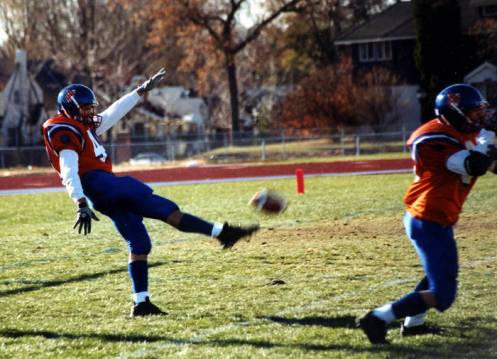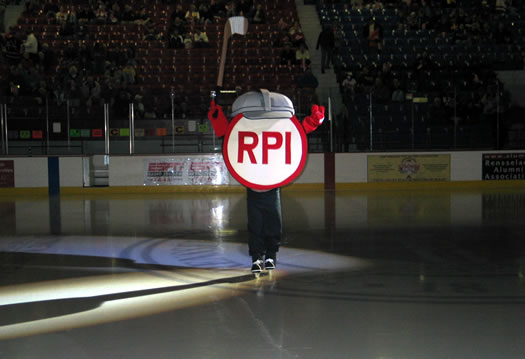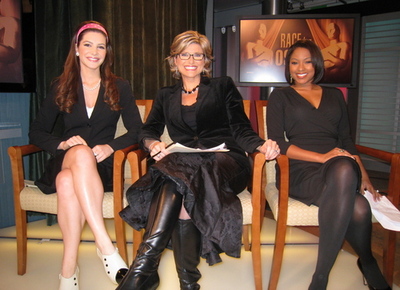The New NCAA Tournament — We Can Live With It
Posted by jstevrtc on July 12th, 2010Andrew Murawa is the RTC correspondent for the Pac-10 and Mountain West conferences and an occasional contributor.
The NCAA got around to announcing “The Decision” regarding the layout of the now 68-team tournament and specifically the makeup of the competitors in the four “play-in games” today, and the end result? Punt.
Getting the terminology out of the way first, these games are officially no longer part of the Opening Round, nor are they “play-in games” (not that they ever were). They now make up the entirety of the First Round of the NCAA Tournament, otherwise known as the First Four. Those games that get played on Thursday and Friday? Those are now the Second Round, with the weekend games now the Third Round, with the winners there still advancing to the Sweet Sixteen.
We knew before today that there were three main options that the NCAA was considering: the final eight at-large teams matching up, the lowest eight automatic qualifiers matching up, or some combination of the two. That last one, that’s what we got. And you know what? That’s probably the best decision.
If the NCAA had chosen to send only the lowest eight qualifiers to these games, there would have been numerous problems, not the least of which would be a continuation of the idea that those first four games aren’t really part of the NCAA Tournament. The teams that advance from one-bid conferences like the MEAC, SWAC, American East and Big Sky (to name just a few of the usual suspects) would battle it out in Dayton in relative anonymity for the right to advance to their chance to get killed by a one-seed, while your typical college basketball fan would ignore the whole thing. In the process, sure, the teams involved would have a better chance at winning a game in the NCAA Tournament and thereby earning themselves an extra share of the proceeds from the tournament, but once the “actual” tournament started, there would be four less automatic qualifiers sticking around for their chance to get on national television and test out their slingshot against Goliath. Then there’s also the fact that after spending $10.8 billion on the rights to the tournament, the first four games of the package would be a total wash for the television networks, stuck broadcasting games like Mississippi Valley State against Northern Arizona to a national television audience of almost four digits.
Putting the last eight at-large invitees in these games would have had its own problems, namely making higher seeded teams play one more game to win a championship than do the lowest seeds. Further, there would have been issues about how to seed these teams and where the winner of the games would be seeded. And then there’s the issue that these teams, entirely from either BCS conferences or mid-major conferences, would have the chance to earn extra money from potentially competing in another NCAA tournament game while the one-bid conference teams don’t get such a chance and instead have to settle for their one in a million (hyperbole alert) chance against a one or two seed.
In the end, the compromise between these two choices eliminates, or at least limits, some of these problems. For instance, in the past 10 years, one automatic qualifier would be eliminated from the tournament prior to the Thursday games. With this compromise, that number will grow to two, which is preferable to the four AQs that could have been eliminated. And those four 16 seeds (which will be determined solely by RPI – the four lowest ranked automatic AQs by RPI will meet in two of the games) will have a much greater chance of actually adding an NCAA tournament win to their resume, and the resulting additional dollars to their assets column. Likewise, the addition of the last four at-large teams playing each other adds some flair to the first round games, meaning that college basketball fans may actually be interested in, for instance, a Virginia Tech/Utah State matchup (to take two teams on either side of last year’s bubble). And, in the process of tuning in to that Virginia Tech/Utah State game, they may actually show up early and catch a bit of the hypothetical Mississippi Valley State/Northern Arizona matchup as well.
As far as the bracket goes, there was no one correct solution to the problem of the First Four. The correct number of teams in the NCAA Tournament is 64, and until we get back there (which will happen exactly never) the format of the tournament is going to be imperfect. But given that the imperfection is here to stay, the NCAA made the best of a bad situation. They threw a bone to the one-bid conferences by not having them take up all eight of the First Round slots. Those bubble teams that wind up in these games? They’ll be able to comfort themselves by knowing that prior to the expansion to 68 teams, three-quarters of the participants in those games would have instead been playing in NIT opening round games on possibly the very same night.
There are other issues still to be resolved as far as the First Four goes, such as where the games will be played, and when, but we do know that they will be aired on TruTV, giving the least well-known of the networks that will air the NCAA Tournament a chance to earn some name recognition. For now, Dayton is still expected to remain the host for at least some of the games, with further clarification expected somewhere down the line. Ideally, when the NCAA gets around to announcing the whens and where of the game, they’ll opt not to punt, because on this question, there is an easy correct answer: two doubleheaders at two different locations on Tuesday and Wednesday. For now, start with Dayton hosting one of those doubleheaders and rotate the other doubleheader around the country to classic college basketball venues — say, the Palestra or Hinkle Fieldhouse, or even McArthur Court before Nike torches the place. Have the first game of each doubleheader be the matchup between the automatic qualifiers, with the sexier matchup between the bubble teams acting as the nightcap. The winners from the games on Tuesday advance to Second Round action on Thursday, while the winners from Wednesday advance to Second Round sites on Friday.
And then there are the fans. While those First Four games matching would-be 16 seeds will still be lightly watched, those games matching the bubble teams should make for very compelling basketball, allowing teams that played their way onto the bubble over the course of the season to earn their ticket to the meat of the NCAA Tournament. Sure, the prospect of having four of those types of games is better than having just two, but at the same time, we can be thankful we have those two, instead of having four matchups between overall seeds 61 through 68. And, knowing we’ve got those bubble matchups coming up, maybe we tune in early to TruTV, check out the automatic qualifiers battling it out, and stumble upon just a little more March drama.
So, the NCAA punted. But punts can be okay, so long as you don’t string too many of them together. And they certainly beat fumbles. Given that there were problems with putting all of either type of egg (the AQs or the bubble teams) in the opening round basket, this compromise is just fine.













































First, you couldn’t have spoken the truth more clearly in your statement “The correct number of teams in the NCAA Tournament is 64…”
Second, I agree that this is a punt, but a “not bad” one – great idea as to how to stack the games (bubble game early and lesser-knowns game later in the evening).
Final comment – I’m interested in hearing from RTC about how this will affect office brackets – it’ll be a rush to get them in after Wed. night’s games, if one of those is going to determine a 5/6/7 seed…
Clearly bracket games aren’t going to require people to wait until late Wed. night to submit their brackets, and especially given that two of the play-in games potentially “matter” in terms of later rounds. I think most of the bigger games will simply set their deadlines to Tuesday’s tipoff and make all four additional games count (a half-point, perhaps?). Maybe some other games will do a hybrid system where you still have until Thursday morning to get your bracket submitted, but you can earn bonus points by getting it in early and picking the four PiGs (or the two games that matter, at minimum). It’s a tough call, but I expect that multiple ways will be attempted the first year with the fans ultimately gravitating to the one they like best, and the others following suit in future years.
Good points – it’ll be interesting to see how that goes. I have always thought one of the big problems with this major change (4 play-in games) would be to the standard office pool, which I believe is a driver of a lot of the excitement/hype surrounding the Tourney for people who do not follow CBB all season.
BTW, I know this guy who has been begging for 4 PIGs since the first year of the single PIG – he’s very excited about this change…
I thought, and still think, that if the priority had been the office pool, they would have stuck seeds 61-68 in the PiGs and then people could generally still ignore those games and just put the 1 seed to advance against whoever was the winner with little chance of that biting them down the line.
Of course, the other side is that putting all bubble teams in the PiGs would make the actual games far more interesting, with the brackets now being more difficult to manage.
Just another area in which the decision can be seen as a compromise between two opposite viewpoints.
Yeah, for the casual fan, the excitement derives from the pool. But honestly, it shouldn’t be all that different to those fans, the vast majority of whom fill out their brackets on Monday morning as soon as they get into the office.
The people who wait until Thursday morning and will be most impacted by this change are the hardcore fans (readers of this site) who have now lost somewhere in the range of 40 hours of analytical time. Assuming of course, that the pools decide to count the PiGs as part of their scoring.